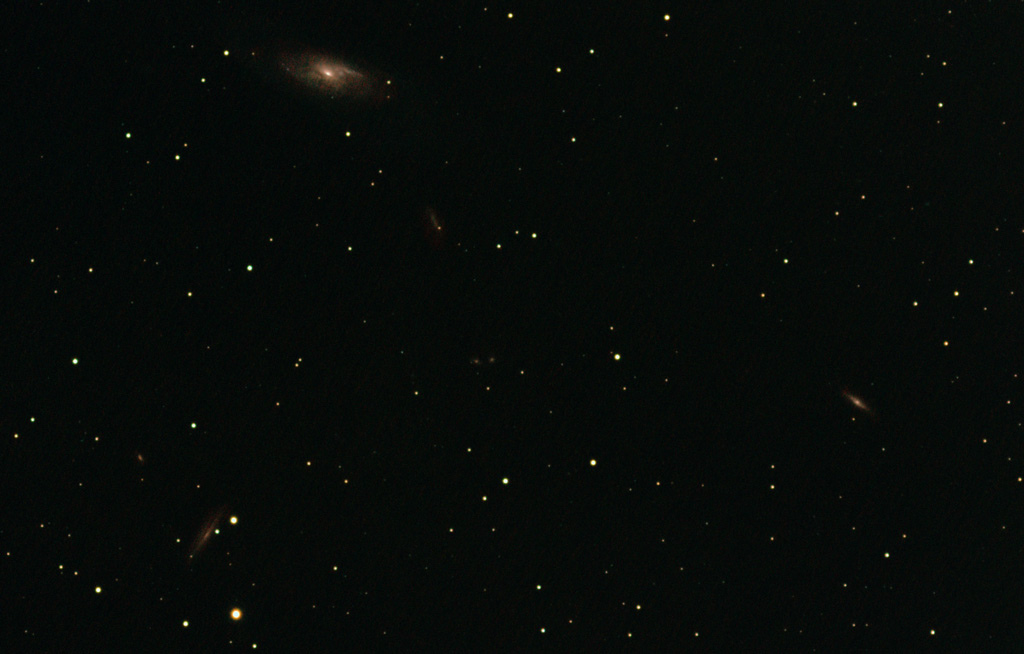The one above might not be an exceptional photo, and certainly it’s beyond the limits of my equipment, but I would like you to ponder something. See those galaxies? Forget what they are. Just concentrate on the pixels in the image that make them up.
Each of those pixels, if you will turn a bind eye to the fact that this is a scaled down image, corresponds to a tiny sensor of the CMOS chip of my camera. This tiny sensor, as small as 5 thousandths of a millimeter, is like a bucket. But rather than drops of water, it collects photons.
A photon is the smallest possible amount of light. Trillions hit you every minute. Some of them are absorbed by you, others bounce off and give you color. I didn’t catch many photons in this photograph, because those galaxies are very, very far away. Twenty-five million light-years away.
The journey of each of this photons is incredible, and statistically impossible. Somewhere inside one of the hundred billion stars in one of those galaxies, two hydrogen atoms smashed together at the right angle, under strong forces causes by gravity and, thence, pressure. This small accident, occurred over 25 million years ago, released, among other things, a photon. Our lucky girl. Phoebe the Photon shall be her name.
Phoebe begun her life near the core of her star, and it took her a while to get out. She was bouncing, being absorbed and emitted again an uncountable number of times. Each time she bounced, the direction of her traveling was randomly modified. It took her something between 10‘000 and 100‘000 years to finally endure her last bounce and finally be free of the warm interiors of the star that gave her birth.
It sounds incredible, but of all possible directions in the three dimensions she could’ve taken, Phoebe was headed towards our galaxy! Even more than that, actually: she was headed towards the spot that our galaxy would occupy 25 million years later. She traveled in the near absolute zero cold of the void intergalactic space, and it was a long journey.
How can you believe that of all the places in our galaxy, Phoebe was going to hit our Solar System? And you know, that’s a big place. Compared to the Solar System, the Earth is tiny. It’s tinier than a particularly small grain of sand in a football field. But Phoebe was going there. More than that: for a ridiculous trick of the Universe, she was going to hit the tiny lens of my telescope! Had she come five minutes later or earlier, she would’ve hit the ground next to it. And what are five minutes, when she’s just completed a journey of twenty-five million years?
The lens of the telescope has deflected Phoebe’s trajectory slightly, and sent her off to hit a tiny bucket in the sensor of my camera.
Welcome to Earth Phoebe.

